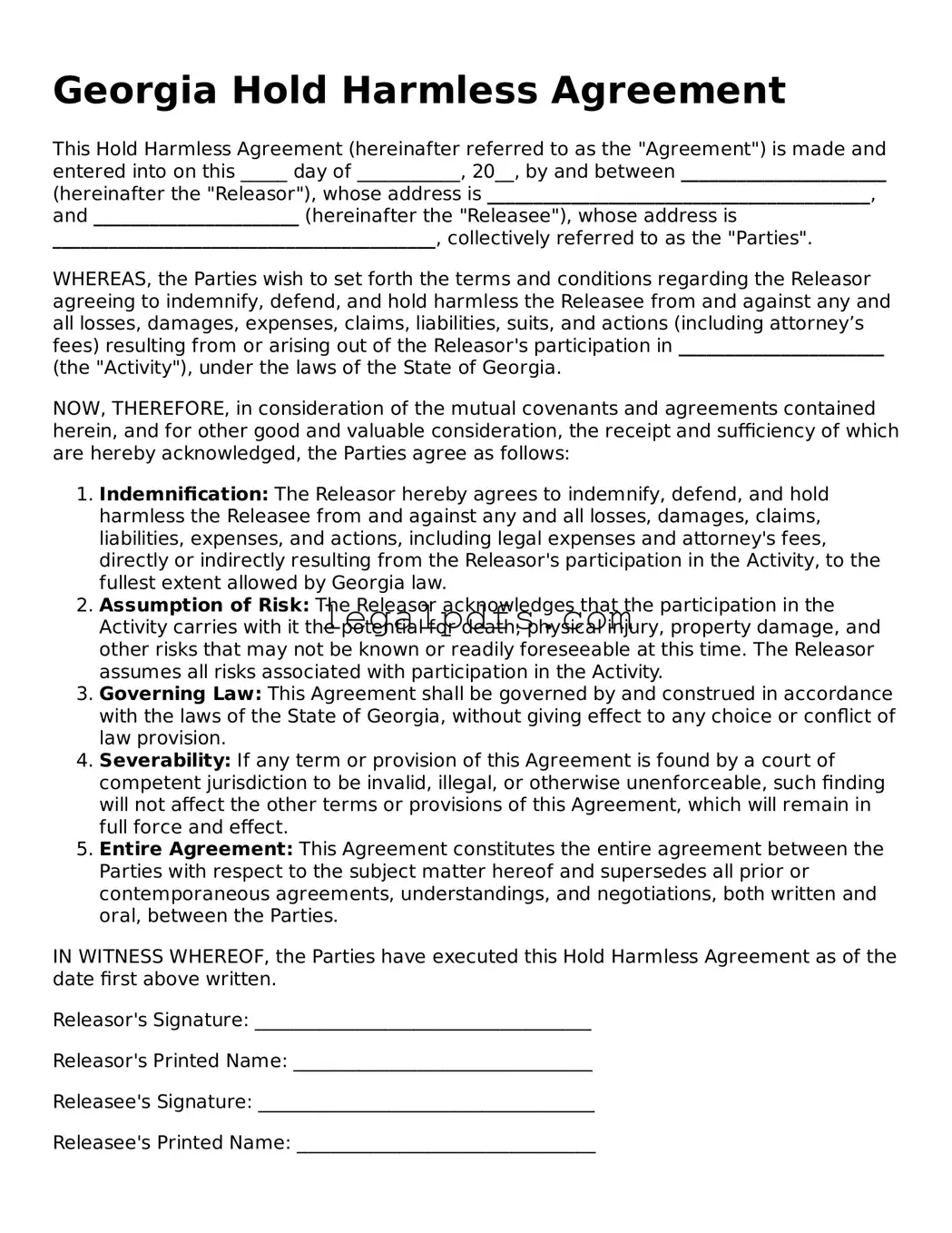What is a Georgia Hold Harmless Agreement?
A Georgia Hold Harmless Agreement is a legal document where one party agrees not to hold the other party liable for any loss, damage, or legal claims that might arise out of a specified activity, event, or transaction. This agreement is commonly used to protect service providers, property owners, or event organizers from lawsuits or claims in Georgia.
When should I use a Georgia Hold Harmless Agreement?
You should consider using a Georgia Hold Harmless Agreement whenever you are engaging in activities that involve potential risks or liabilities. This includes, but is not limited to, construction work, event hosting, leasing property, or any service that could harm people or property.
Is a Georgia Hold Harmless Agreement legally binding?
Yes, a Georgia Hold Harmless Agreement is legally binding once it is signed by all the involved parties. However, for it to be enforceable in a court of law, it must be clear, specific, and entered into voluntarily by all parties. Additionally, it cannot cover acts of gross negligence or intentional harm.
Can a Hold Harmless Agreement protect me from all liabilities?
No, a Hold Harmless Agreement in Georgia cannot protect you from all liabilities. It generally does not provide protection against claims of gross negligence or intentional misconduct. Moreover, the effectiveness of the agreement depends on the specific wording and the circumstances under which it is applied.
How do I draft a Georgia Hold Harmless Agreement?
To draft a Georgia Hold Harmless Agreement, you should include detailed information about the parties involved, the scope of activities covered, the duration of the agreement, and any specific liabilities or risks being disclaimed. It's highly recommended to consult with a legal professional to ensure that the agreement meets all legal requirements and fully protects your interests.
Do both parties need to sign the Georgia Hold Harmless Agreement?
Yes, for the agreement to be effective, both the party seeking protection and the party agreeing to not hold the former liable (releasor) must sign the document. The signatures confirm that both parties understand and agree to the terms set forth in the document.
Can a minor sign a Georgia Hold Harmless Agreement?
Typically, a minor cannot legally enter into binding contracts in Georgia, including a Hold Harmless Agreement. Any agreement signed by a minor can be considered void or voidable. It is crucial to have a parent or legal guardian sign the agreement on behalf of the minor.
How long does a Georgia Hold Harmless Agreement last?
The duration of a Georgia Hold Harmless Agreement can vary. It might be for a specific event, for the duration of a certain activity, or it could be ongoing. The specific terms regarding the duration should be clearly stated in the agreement itself.
Can I revoke a Georgia Hold Harmless Agreement?
Revoking a Georgia Hold Harmless Agreement is possible, but it usually requires the agreement of both parties involved or a provision in the agreement itself that allows for termination. The terms and conditions for revocation should be clearly outlined in the document.
